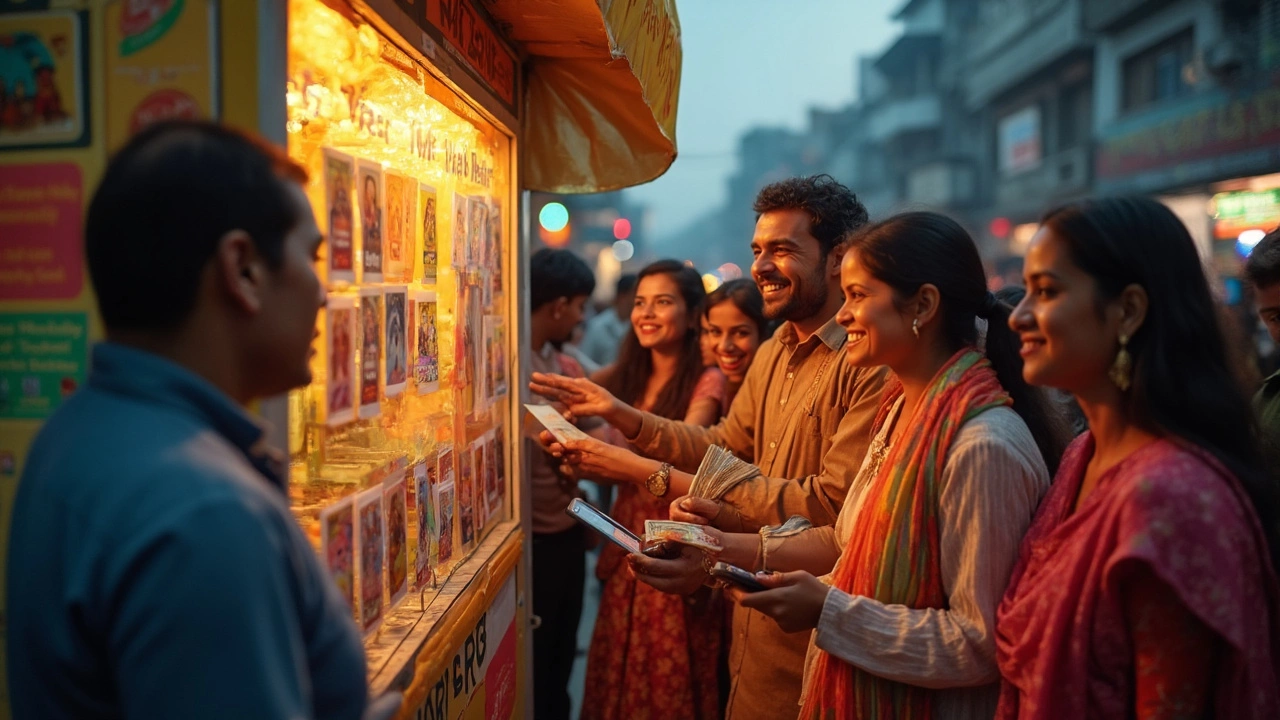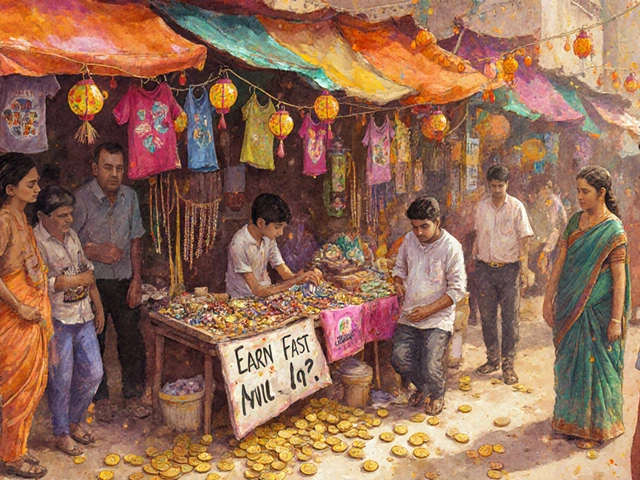Charity touches every corner of our lives, but let’s be real—most of us don’t send a check in the mail anymore. If you look around, almost everyone taps their card or clicks a button. In fact, digital giving outpaces old-school cash or check donations by a mile. According to a Giving USA report from last year, over 60% of all donations happened online or by mobile in the US alone. Quick, easy, and you barely have to move from your couch.
But why do people still line up at charity runs, bake sales, or community drives? Events are unbeatable for bringing folks together, raising a ton of funds, and making you feel like you’re part of something huge. I’ve seen more smiles at a simple fundraiser than in a cat video marathon with Luna (and that’s saying something). These personal touches add a sense of belonging to the act of giving—and sometimes encourage people to dig a little deeper than they would behind a screen.
- The Crowd Favorite: Cash vs. Digital Giving
- Why Online Donations Lead the Pack
- Events That Bring People Together
- Small Acts, Big Impact: Everyday Fundraising
- Tips for Choosing Your Best Giving Method
The Crowd Favorite: Cash vs. Digital Giving
There’s a huge shift happening in how people give to charity events. Old-school cash donations aren’t completely gone, but most folks now reach for their phones or computers instead of their wallets. Digital giving dominates the scene, and it’s not just because of COVID-19. Even before the world went remote, donors loved the speed and ease of giving online.
Check this out: in 2024, the National Philanthropic Trust highlighted that 63% of Americans gave through digital channels, while only around 21% donated with cash or checks at events. People trust secure online payments, and if you forget your wallet, your smartphone is still right there in your hand. Sometimes, the donor even covers processing fees—so more money goes to the good cause.
Why the jump to digital? Here’s what stands out:
- Donations happen instantly—no mailing, no forms.
- Mobile apps and QR codes make it super easy, even during a charity run or festival.
- Most charities now accept digital wallets like Apple Pay and Google Pay.
- Receipts come right to your inbox, making tax time simple.
But classic charity events aren’t left out. At smaller events, you’ll still spot cash jars or raffle ticket sellers, especially in tight-knit communities or older crowds. There’s a sense of trust and tradition with handing over bills. Still, it’s just a sliver of the big fundraising pie.
“Digital donations have become the backbone of modern charity, letting causes reach more people in less time,” says Ashley Thompson, co-founder of Charity Navigator.
Let’s get more specific. Peek at the real numbers from last year:
| Donation Method | Percentage of Total (2024) |
|---|---|
| Online Donations | 63% |
| Cash | 14% |
| Checks | 7% |
| Event Apps/QR Codes | 16% |
This table says it all—people now trust digital giving above all else. If you're planning to support charity events or organize one yourself, taking digital payments is basically a must. But don’t toss out the cash jar just yet, especially if your crowd prefers to do things the old-fashioned way. Mix and match for best results.
Why Online Donations Lead the Pack
If you've wondered why your inbox is full of charity appeals that need just one click, you're not alone. Online giving has totally changed the charity game, making it easy and quick for regular people to pitch in. According to a 2024 Charitable Giving Report, nearly 67% of all *individual* donations now come through online platforms—that’s up from less than 10% just a decade ago.
Let’s get real about why this exploded so fast:
- It’s simple: Whether you’re on your phone or at your computer, online donations take less than a minute. There’s no paperwork or stamps, just a few taps and you’re done.
- People want options: Want to set up automatic monthly giving or send a quick $10 one-time donation? Online platforms give you that flexibility, and you can stop or change your donation anytime.
- Peer-to-peer fundraising: Sites like GoFundMe and Facebook fundraisers make sharing causes with friends almost addicting. Most folks give because someone they know asks.
- Safety and receipts: No one likes carrying cash or losing a hand-written note. Digital records make it easy for both donors and charities to keep track (and handy come tax time).
And get this—certain days are donation magnets. Check out this mini table showing spikes in *charity events* online:
| Date | Event | Percentage Spike in Donations |
|---|---|---|
| Giving Tuesday (First Tuesday after Thanksgiving) | Global Online Giving Day | +350% |
| December 31 | Year-End Giving Rush | +120% |
| April 15 | Tax Deadline/Last-Minute Gifts | +60% |
The real game-changer? Social sharing. You can donate and then challenge friends to match your gift right away, building a massive wave of support in no time. That’s why so many charity events now push digital first—they know most people will see, click, and likely give before they even finish their coffee.

Events That Bring People Together
Charity events are real-life proof that people care. Think about fun runs, school bake sales, gala dinners, and even simple neighborhood yard sales with a cause—these aren’t just about raising cash. They make giving social and memorable. In 2024, fundraising events were responsible for about 30% of the money raised by nonprofits in the US, according to Blackbaud's annual donation trends report. That’s not small change when you consider the size of the charity world.
Why do these events work so well? For starters, they add a face-to-face vibe you just can’t get online. Getting together, sharing a laugh, cheering each other on—suddenly, giving doesn’t feel like a chore. It’s more like hanging out, but with meaning. That’s why charity events often see people give higher amounts than they might for a random online campaign.
Some tried-and-true formats that get results:
- Charity events like 5K walks or fun runs—easy to join, high turnout, and often pull in sponsorship deals too.
- Benefit concerts and auctions—people love supporting a cause if they get to enjoy music or bid on cool stuff and experiences.
- Community dinners or potlucks—food brings people together, and everyone pitches in.
If you want to host an event, keep it simple. Pick something folks in your area already like—maybe sports, food, or music. Don’t feel the need to make it fancy; what matters most is getting friends, family, and neighbors involved. And don’t ignore the power of social media—posting photos and stories during your event can help boost donations from people who can’t join in person.
Even if you’re not the organizing type, showing up and taking part makes a real difference. You’ll have a good time and your presence alone helps build momentum for the cause.
Small Acts, Big Impact: Everyday Fundraising
Most people think you need to give a lot to make a difference, but everyday fundraising proves that small actions really add up. On average, over 70% of all charitable gifts in the U.S. last year were under $100. That’s nothing to sneeze at—millions of people simply rounding up their purchases or starting a tiny birthday fundraiser keeps charities moving.
Let’s talk everyday ways people work giving into real life. Ever checked out at a grocery store and the cashier asks if you want to donate a dollar to a children’s hospital or a food bank? That’s called "point-of-sale fundraising." Just in 2023, these little asks raised nearly $750 million in the US for all kinds of causes. It’s quick, painless, and basically built into errands you already do.
Online platforms make it even easier. Facebook birthday fundraisers alone pulled in over $1 billion since 2017. Apps like GoFundMe or Venmo let people chip in for a friend, neighbor, or even a favorite shelter with just a couple clicks. No need for a big event or fancy setup.
If you’re looking for ideas you can try right now, here are a few:
- Set up a recurring donation—even $5 a month adds real value over time.
- Ask friends to donate to your favorite cause instead of birthday gifts.
- Use your workplace’s matching gift program if they have one—seriously, check, because a lot of people forget to double their impact.
- Round up your change at stores that offer it. It’s money you’ll never miss and it helps the total grow fast.
Whether it’s your daily coffee shop run or sharing a fundraiser link on your socials, charity events today often happen in little moments, not just big galas. That’s what lets everyday people power big change without a ton of effort or cash.

Tips for Choosing Your Best Giving Method
Not sure how to give? Picking your best option really depends on what matters most to you—speed, connection, impact, or maybe even a bit of extra fun. There’s no one-size-fits-all, but here are some things to think about that can help narrow it down.
- Think about convenience: If you’re like most people and want things quick and easy, direct online donations are the way to go. Most charities have secure websites or apps, and you can even set up monthly gifts in minutes. Since 2024, over 70% of donors age 25-40 used digital platforms for giving—it’s fast, safe, and fits busy schedules.
- Love social vibes? In-person charity events still pull a crowd and have a special feel. If you want to connect with others and see your community come together, look for fun runs, charity dinners, and community drives. They’re especially good for people who want their giving to feel more personal.
- On a tight budget? Micro-donations are a thing! Lots of apps now let you donate your spare change, literally rounding up shopping purchases for charity. It might feel small, but those micro-gifts pile up fast. For example, over $7.5 million was raised through micro-donation platforms in the US in 2024 alone.
- Want tax perks? Always check if your preferred method lets you get a tax receipt. This goes for digital and in-person events, but not every platform or organizer is set up for this. If your donations add up each year, make sure you can snag those receipts when it’s time to file.
- Love a challenge? Try matching donations or peer-to-peer campaigns. These usually happen through online fundraising and can double your impact. Major platforms like GoFundMe and Facebook Fundraisers now let you set up pages where your friends and family can join in, stretching every dollar further.
One last thing—pick a method you’ll actually stick with. Whether you want to donate automatically each month or make your charity part of social events, your comfort is key. There’s nothing wrong with switching it up until you find what fits your lifestyle (and budget) best.





